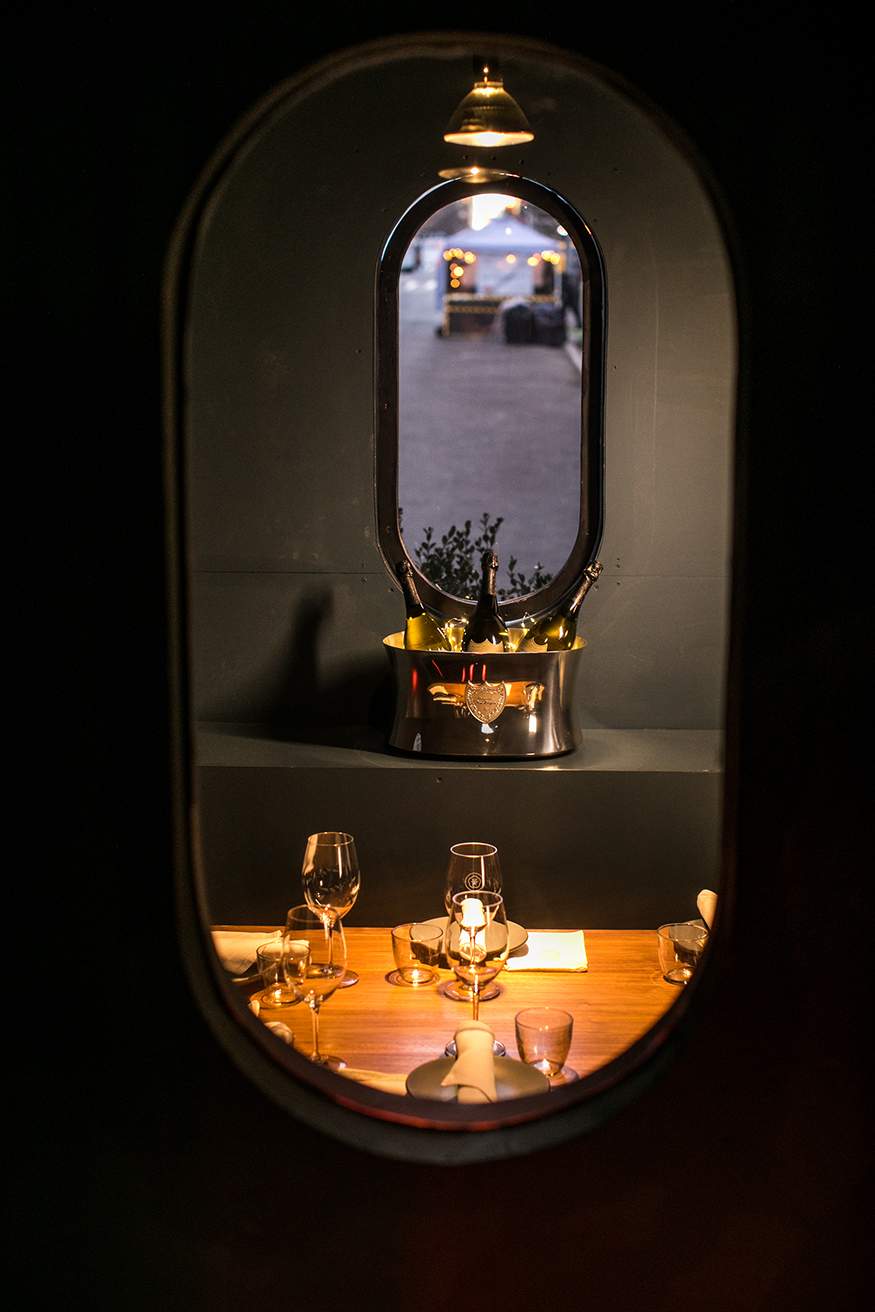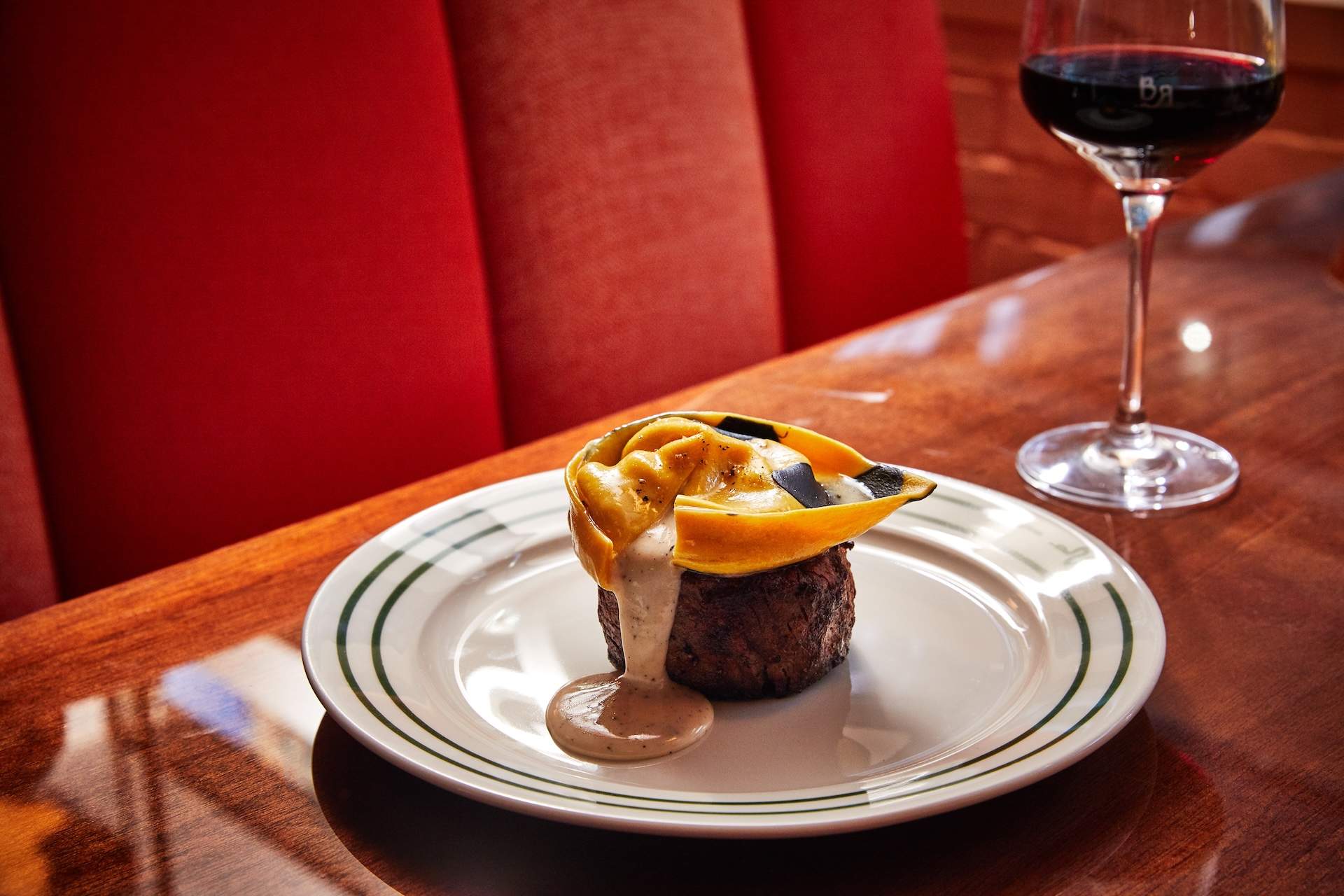In 2020, Toronto chef Alida Solomon scrambled to transform her beloved Tuscan restaurant into a more pandemic-friendly place. Solomon plus a skeletal staff of four fired on all cylinders, turning Tutti Matti, best known for handmade pastas that evoke Italy’s olive groves, into a bakery and grocery store, all while keeping the restaurant afloat.
In the summer of 2021, the chef placed a picnic bench in the nearby alleyway for outdoor dining, serving barbecued fare and sandwiches to the area’s office workers. Come November, Toronto shut down—again. “It was just a lot of back and forth,” she remembers. “There are just so many pieces to the restaurant puzzle, the so-called pizza pie.”
Solomon and Tutti Matti represent an especially hard-hit but nimble industry that has worked tirelessly to adapt layouts to the ever-shifting demands of the COVID-19 pandemic, such as safety guidelines and occupancy limits. As restaurants in the U.S. and Canada wrestled with everything from dining room shutdowns to takeout and delivery surges, here are some of the more permanent ways in which they altered their designs.
Bringing the outside in

“I think one of the biggest things to come out of the pandemic is a connection to fresh air, which means safety,” says Lauren Chipman, CEO of Chipman Design Architecture, a Chicago-based firm whose portfolio includes clients such as Shake Shack and Time Out Market Chicago. “People are now craving human interaction in environments that feel safe,” she adds.
It’s why her firm finds itself integrating features such as glass wall systems and garage doors into restaurant designs for spots including Swift & Sons Tavern, a bar that specializes in oysters and steaks, perched across Wrigley Field. “Even if it’s not a completely outdoor experience, we’re getting a lot of requests for [features] that allow restaurants to open up,” she says.
Outdoor elements also surface through the prevalence of plants, now increasingly popular in restaurants that want to enliven their spaces. At Bavel, a buzzy Middle Eastern spot in Los Angeles’s Arts District, pothos vines dress a floating garden structure, infusing warmth into the trendy dining room. A 22-foot living wall does double duty at Juvia, a rooftop restaurant in Miami, blocking out traffic noises and filtering out pollutants.
A second act for streateries
No discussion about restaurants pivoting through the pandemic would be complete without mentioning streateries—the outdoor seats that mushroomed in metropolises all over the U.S. and Canada. The eating-on-asphalt trend first took off in Seattle, where businesses joined forces with the local government to create outdoor dining spaces back in 2013. While many early pandemic-era streateries were largely functional, focused primarily on meeting the CDC’s social distancing guidelines, the ones with staying power are eco-minded and experience-driven.
“I’ve seen a lot of [streateries] that are just plywood and 2x4s, and they’ll probably last for a couple of seasons before becoming trash in a landfill,” shares Drew Seskunas, the architect and inventor behind the firm Saw.Earth in Long Island City, New York. Seskunas was well ahead of the curve when he conceptualized the inventive outdoor dining structure—inspired by Buddhist temples in Bagan, Myanmar—for Brooklyn-based restaurant Rangoon in the fall of 2020. Seskunas opted for pre-finished aluminum—“That’s like, 97% recycled material,” he explains—for the streatery’s external cladding. “It’s easily dismountable so people can immediately reuse the material; that’s something I really wanted to make sure I did.”
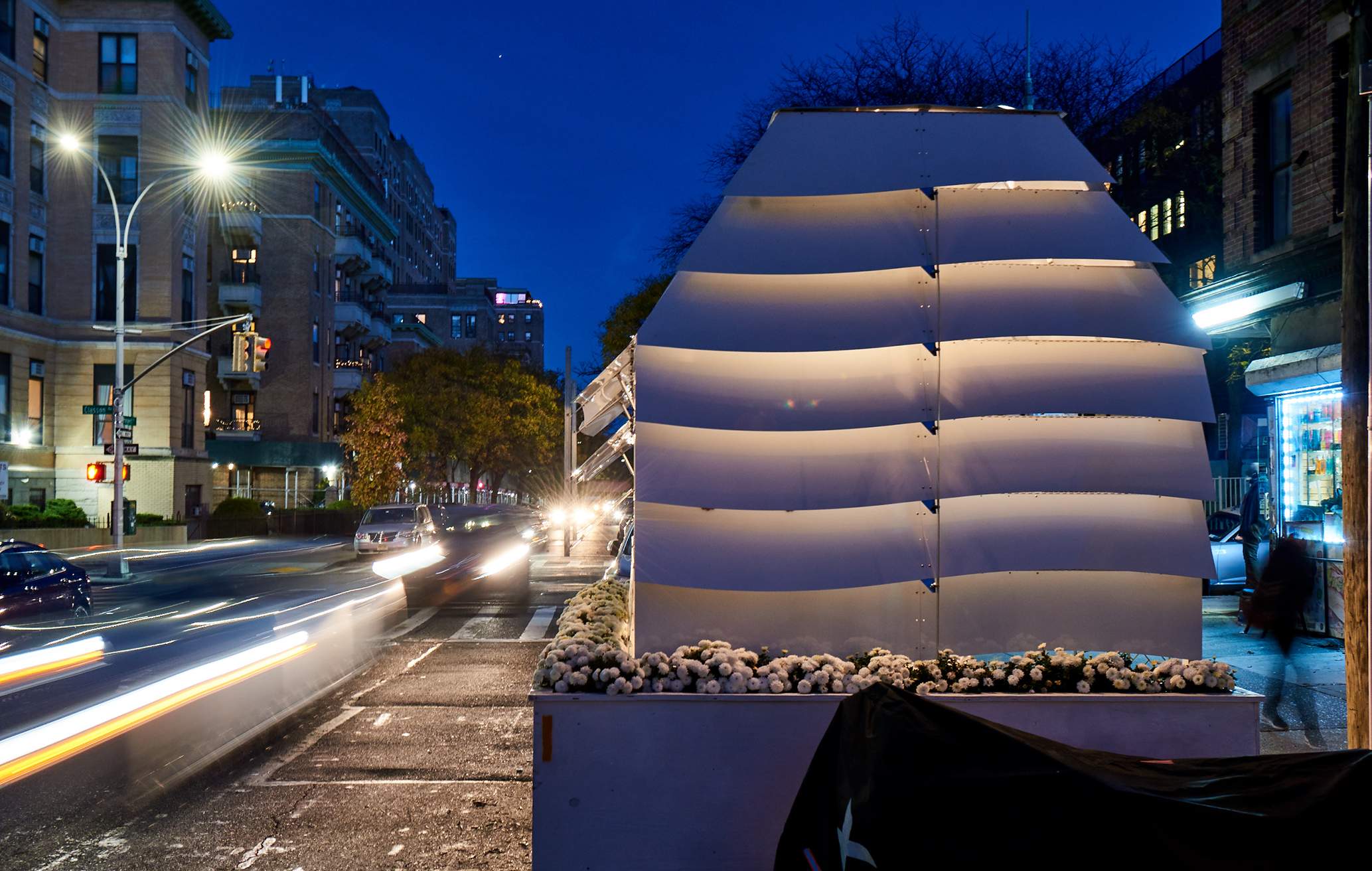
For others, like Rustam-Marc Mehta, a partner at GRT Architects in Brooklyn, it was crucial that the streateries his firm designed for New York City restaurants such as Cote NYC, Quality Meats, and Don Angie could withstand the Big Apple’s seasonal and urban rollercoaster. Mehta relied on rock-resistant material for the structures’s floors—so they could face the city’s snow plows, for example. “You’re building a house, basically,” he says, adding that the most enduring streateries have stud walls, real roofing, and insulation, which promises far better drainage.
The streateries have also grown from an experiential and aesthetic standpoint: Quality Meats recently unveiled a petite pop-up bar within its five-booth cabin, proving the structures are multifaceted, too. As Mehta points out, it’s easier for a restaurant to take design leaps in a pavilion setting than it is to dramatically alter its interiors.
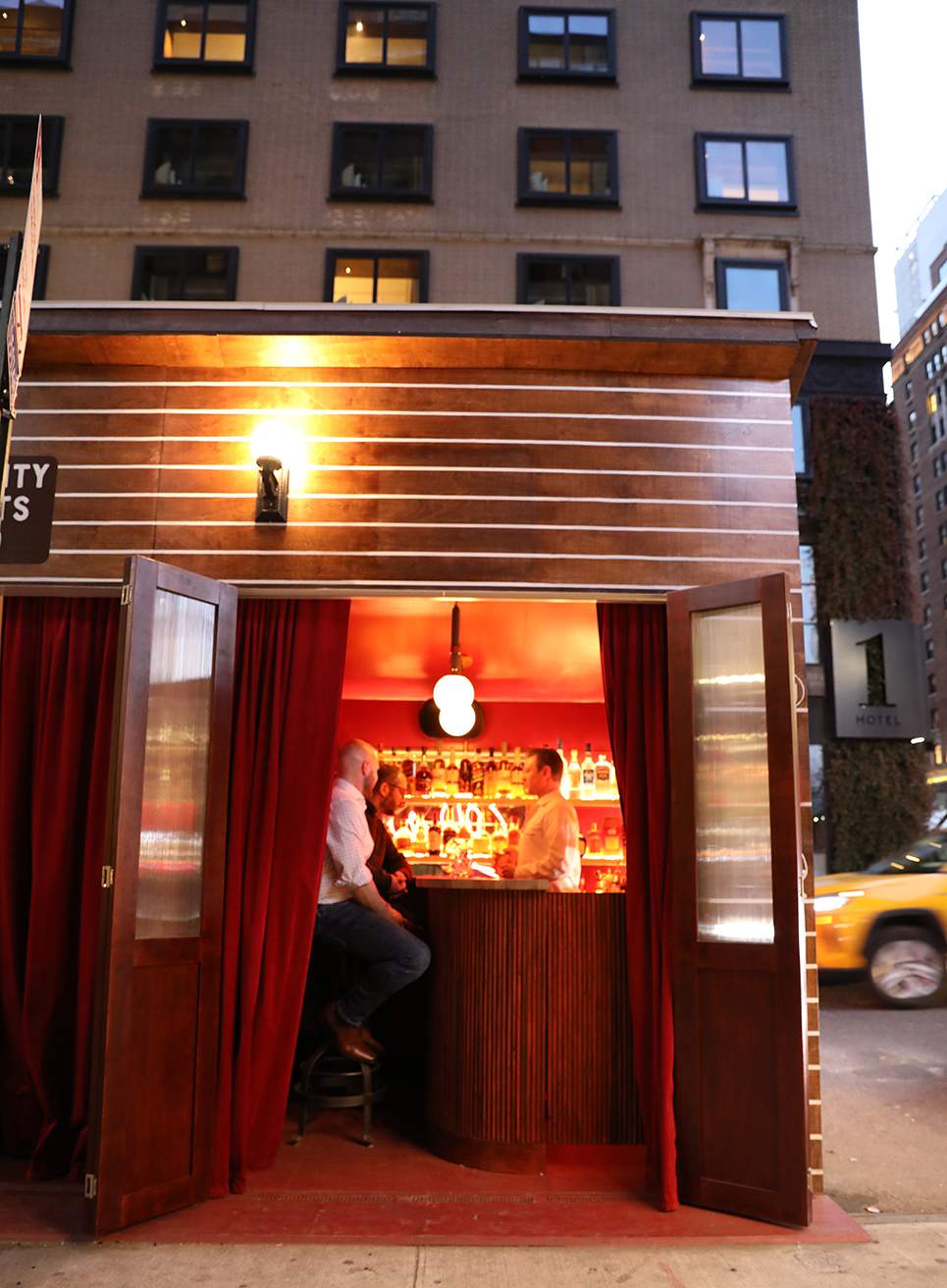
“We’re not just copying the restaurant,” he says. “Sometimes, the [streatery] gets to be a more fun and amplified version of it,” Mehta says, pointing to recent projects such as a yet-to-be-constructed exterior structure GRT Architects designed for Peter Luger Steakhouse—a playful shutter-clad riff on the restaurant’s staid timber interiors.
“[Streateries] have outlasted seasons and evolved,” Mehta says. “But there’s a cost to maintain them,” he adds, sharing that his firm is working alongside the American Institute of Architects, New York, to shape policy decisions around the use of street frontages.
“A good deal of our clients feel like the outdoor space is really crucial, should there be another pandemic,” he continues. “That’s why people want to think about the longest-term exterior structures possible.”
Maximizing real estate
In these shaky times, some proprietors now prioritize seating space over waiting areas. At The Rose Venice, an iconic boho-chic restaurant in California, chef and owner Jason Neroni admits he was drawn to the idea of using all available space for his upcoming venture. Neroni’s new restaurant, a pizzeria situated three miles from The Rose, will eschew a waiting area, fully devoting its patio section to seating instead. “Waiting area? Nah,” he says. “You can wait outside.”
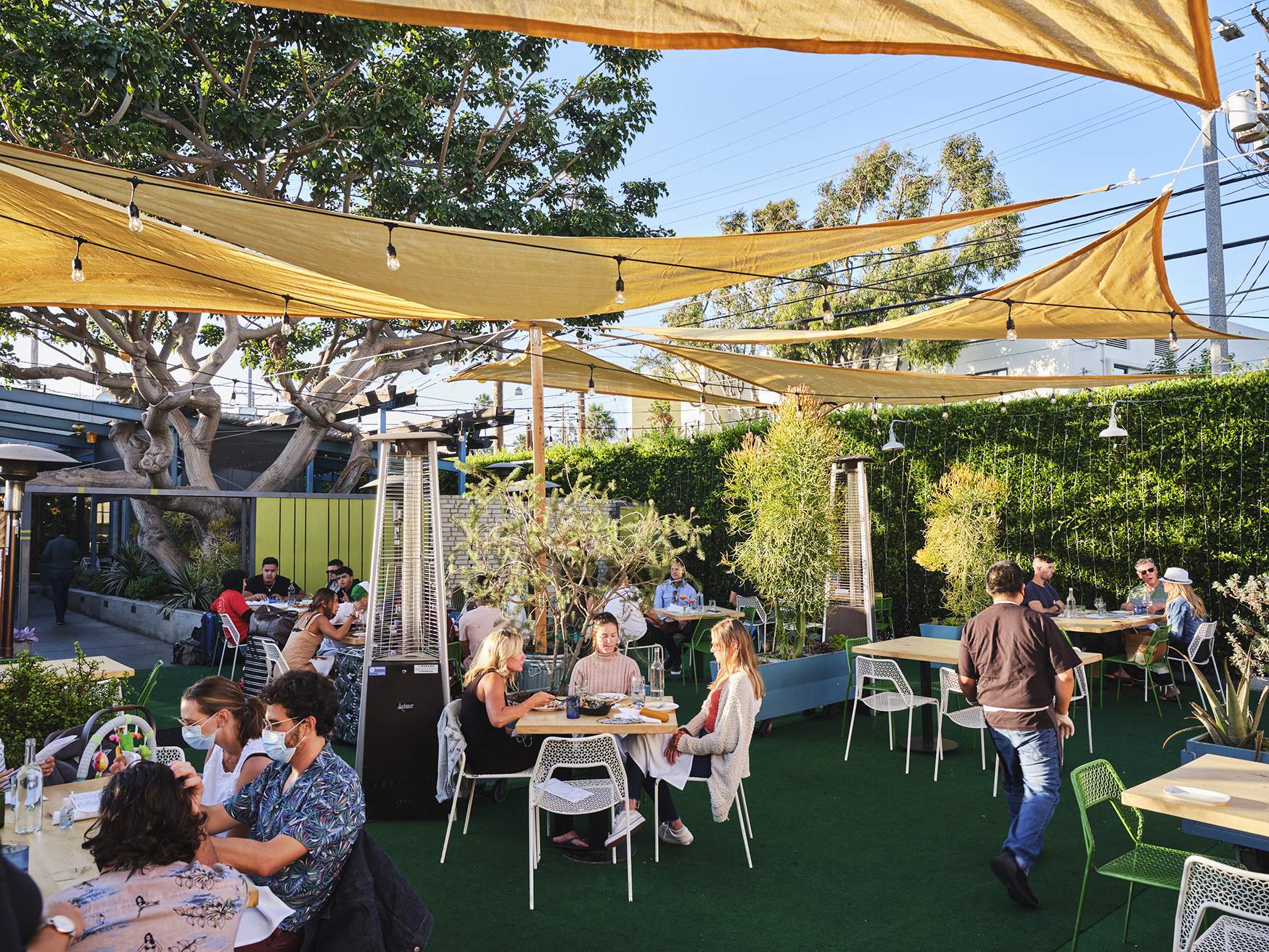
But waiting outside isn’t always feasible in chillier cities such as New York, where one of Mehta’s clients, an all-day Italian spot that’s still in the works, is currently noodling over how to best utilize a parklet space—does it become an informal sit-with-a-cocktail waiting area, for instance?
“We don’t have enough certainty about where we’ll be in a year’s time,” Mehta says, highlighting unpredictability, yet another pandemic-related stumbling block restaurateurs have to navigate around. “We haven’t reached a conclusion yet.”
Shape shifting
For restaurants that weathered the pandemic’s dreariest stretches, staying in business often meant designing for a variety of consumer experiences that didn’t necessarily include eating indoors.
At Tutti Matti, for example, though chef Solomon bid a temporary farewell to the farmers’ market she used to set up four times a week in 2020, she still retains some of the retail shelving introduced at the time. It’s where Solomon houses her restaurant’s line of pasta sauces, house-made mustards, salts, hoodies, and tee-shirts. “We had to change what we were doing in order to survive,” she says.
Versatility also mattered to Chipman’s clients, including a Chicago-based pizzeria group that ran out of back-of-the-house storage when it introduced a retail section during the pandemic. “We decided to use their custom-branded food items as a backdrop as [diners] entered the restaurant,” Chipman says. “It’s a branding opportunity, it shows freshness, and all we have to do is provide some shelving and great lighting. It’s about rethinking how we’ve done things in the past.”
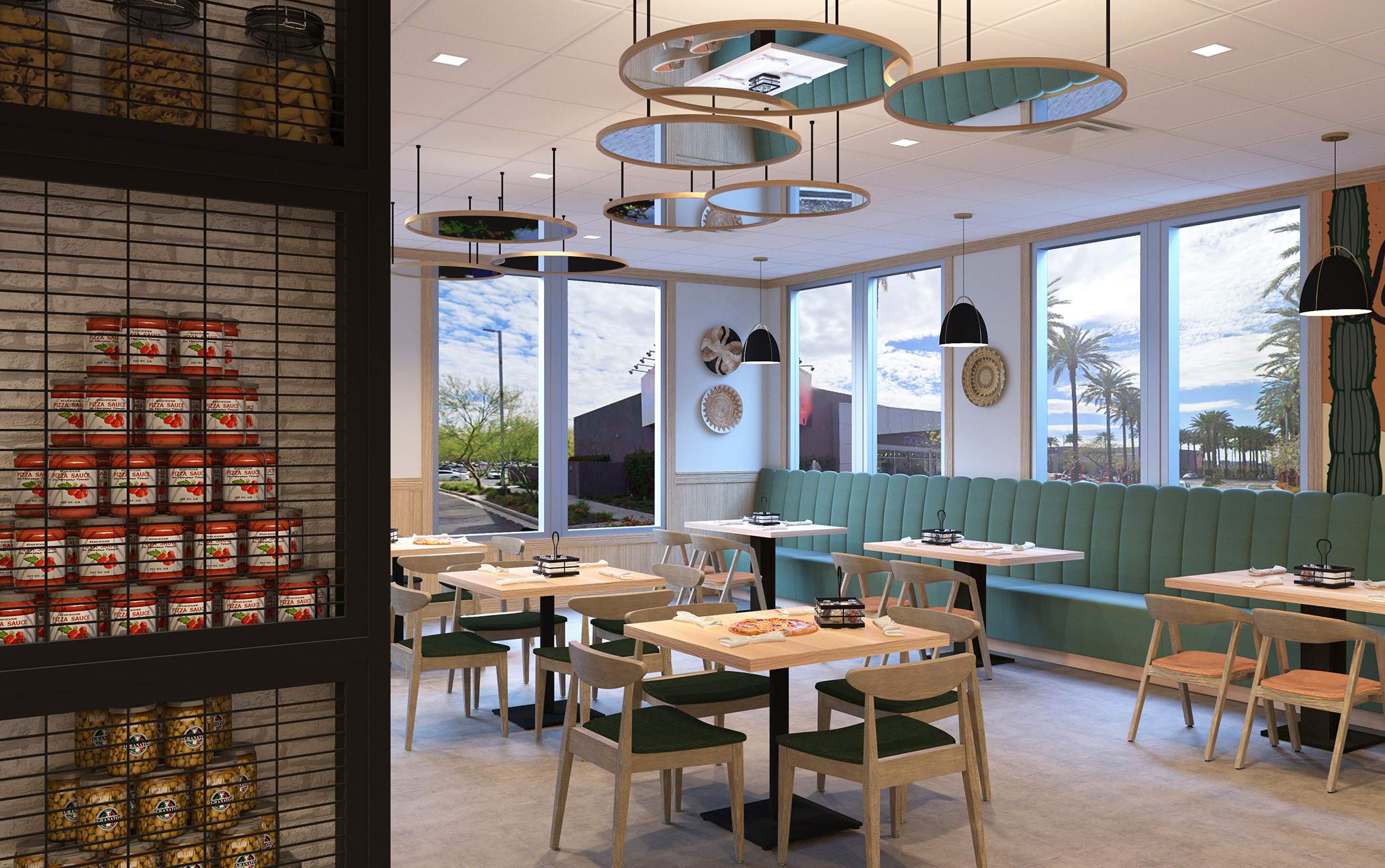
GRT’s Mehta argues that restaurant design actually has a long history of adapting to various customer journeys—such as happy hour on Friday versus room for strollers at Sunday brunch.
“So maybe pandemic-related changes are just one more thing for them to keep at the back of their minds,” he says, acknowledging that pivoting is one of the few constants in the business. “If you think about hospitality spaces, they’ve always accommodated many different universes of use.”

